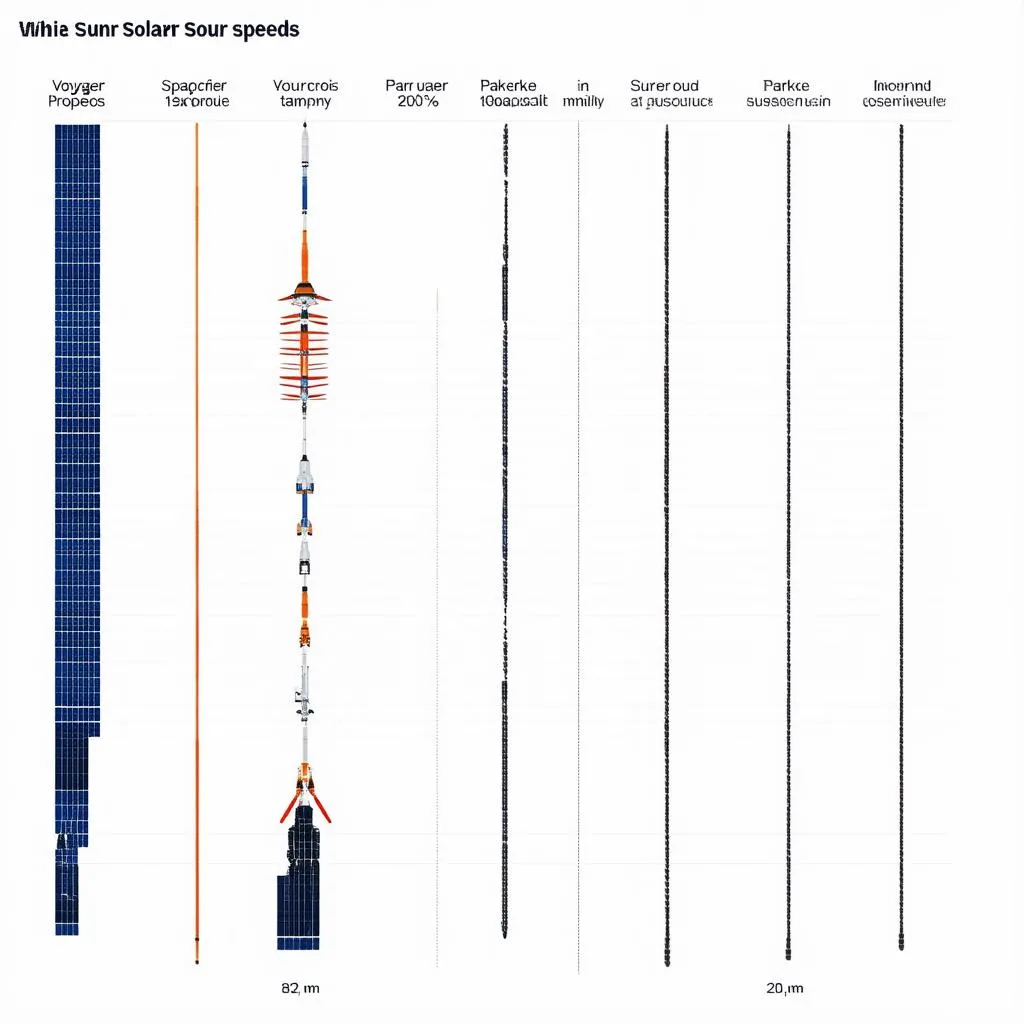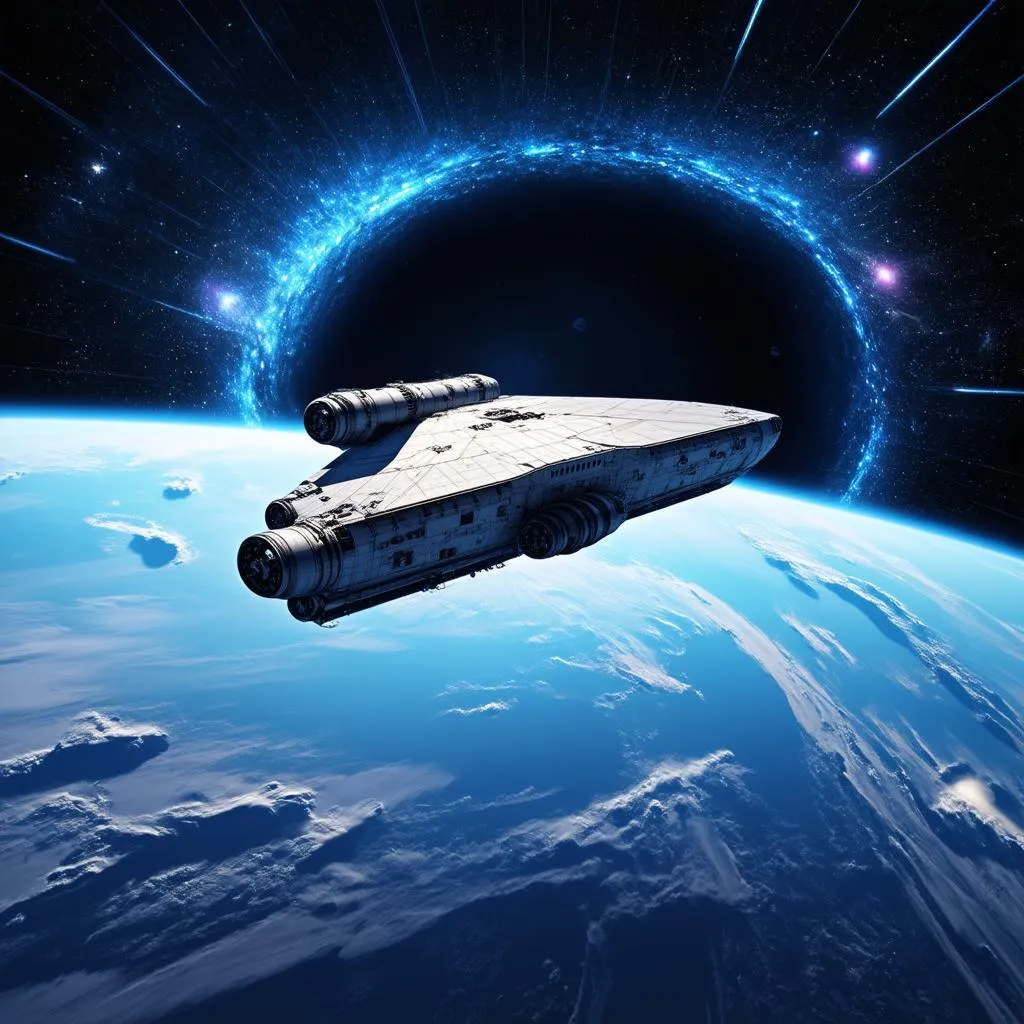Have you ever gazed at the night sky, mesmerized by the twinkling stars and distant galaxies, and wondered, “How fast could we possibly travel through that vast expanse?” It’s a question that has captivated humanity for centuries, fueling countless science fiction stories and inspiring real-life space exploration.
So, just how fast can we travel in space? The answer, like the universe itself, is both incredibly complex and awe-inspiring.
Breaking the Bonds of Earth: Current Spacecraft Speeds
Before we delve into the theoretical limits, let’s consider how fast we can travel with current technology. The fastest spacecraft ever launched, the Parker Solar Probe, reached a mind-boggling speed of 430,000 mph. To put that into perspective, that’s fast enough to travel from New York City to Tokyo in less than a minute!
However, even at those incredible speeds, reaching our closest stellar neighbor, Proxima Centauri, would still take tens of thousands of years. This highlights the sheer scale of the cosmos and the limitations of our current propulsion systems.
 Spacecraft Speed Comparison
Spacecraft Speed Comparison
The Cosmic Speed Limit: The Speed of Light
According to Einstein’s theory of relativity, the speed of light in a vacuum, approximately 186,282 miles per second, is the ultimate speed limit in the universe. Nothing with mass can travel faster than this cosmic speed limit.
To understand why, imagine a car trying to accelerate to the speed of light. As the car gets closer and closer to that speed, its mass increases infinitely, requiring an infinite amount of energy to accelerate further. This effectively creates an impenetrable barrier, preventing us from ever reaching the speed of light with conventional methods.
Beyond the Horizon: Theoretical Possibilities for Faster-Than-Light Travel
While exceeding the speed of light might seem impossible, theoretical physics offers some tantalizing possibilities:
1. Warp Drives: Bending the Fabric of Space-Time
Imagine folding a piece of paper and bringing the two ends together. Instead of traveling the length of the paper, you’ve essentially “warped” space to instantly reach your destination. This is the basic concept behind a warp drive, which would manipulate space-time itself to allow for faster-than-light travel.
While still purely theoretical, some physicists believe that warp drives might be possible by exploiting exotic forms of matter with negative mass-energy density.
2. Wormholes: Tunneling Through Space-Time
Another theoretical possibility is the existence of wormholes, hypothetical tunnels that connect two distant points in space-time. Traveling through a wormhole could potentially allow us to traverse vast cosmic distances in a fraction of the time it would take to travel through conventional space.
 Wormhole Space Travel
Wormhole Space Travel
The Future of Space Travel: A Journey of Endless Possibilities
While faster-than-light travel remains firmly in the realm of science fiction, the pursuit of understanding the universe and pushing the boundaries of space exploration continues to inspire groundbreaking technological advancements. From ion propulsion systems to solar sails, scientists and engineers are constantly searching for new and innovative ways to propel us further into the cosmos.
FAQs about Space Travel Speed:
How fast does light travel in one second? Light travels at an astonishing speed of approximately 186,282 miles per second. You can learn more about the fascinating properties of light speed in this insightful article: How Far Does Light Travel in One Second?
What is the fastest speed a human has ever traveled? The crew of Apollo 10, during their return trip from the moon in 1969, reached a speed of 24,791 miles per hour, the fastest speed any human has ever traveled.
How long would it take to travel to Mars at our current speeds? The travel time to Mars varies depending on the positions of Earth and Mars in their orbits. On average, a one-way trip to Mars with current technology would take around seven to nine months.
Travelcar.edu.vn: Your Gateway to Exploring the Wonders of the Universe
At TRAVELCAR.edu.vn, we’re passionate about inspiring a sense of wonder and encouraging exploration, whether it’s discovering hidden gems in your own city or pondering the vastness of the cosmos. Check out our website for more fascinating articles, travel tips, and resources to fuel your wanderlust:
- How Fast Can We Travel in Space?
- A Girl Has No Coffee Travel Mug
 Stargazing Travel Destination
Stargazing Travel Destination
Join us on this incredible journey of discovery as we continue to unravel the mysteries of the universe and explore the boundless possibilities of space travel!
